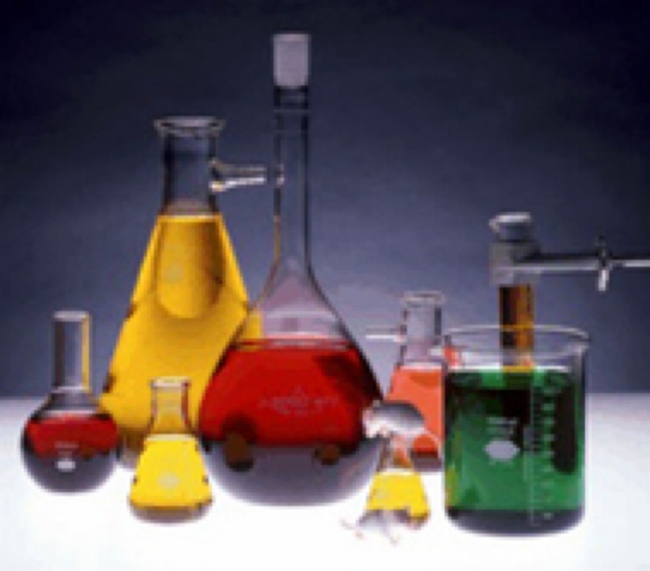Chemicals – what are they exactly? The starting point for any debate is your definition of the terms, and that’s why, when discussing public perceptions of chemicals, it’s easy to get side-tracked by what people mean when they say ‘chemical’.
For example, much has been made of the validity of describing products as ‘chemical-free’, a usage upheld by the UK’s Advertising Standards Authority and perhaps indicative of the ‘chemophobia’ phenomenon. However, speaking as a writer, how people interpret words is up to them. If someone understands ‘chemical’ to mean an industrially-synthesised one, then short of launching a nationwide awareness campaign, the rest of us just have to live with it – either by being prepared to be misunderstood, by explaining what it is we actually do mean, or by finding another word that does the job better.
So putting semantics to one side, and using the word in its broadest ‘everything-is-made-of-chemicals’ sense, what agreement is there on the main messages the scientific community ought to be putting out there? You could write a short book about this, and indeed the campaign group ‘Sense about Science’ have done just that, with their commendably level-headed guide Making Sense of Chemical Stories.
This document and other commentators converge on the following four points about ‘chemicals’, at least those present in consumer products:
Chemicals are chemicals, and their source is irrelevant to their properties, provided of course that they are pure. They could be extracted from a natural source, or synthesised industrially – it makes no difference (although you might of course care about who your money’s going to, or the environmental friendliness of the process used).
All chemicals would be harmful to you if you ate or breathed in enough of them – it’s the dose that matters. Again, origin is unimportant, and there are examples of naturally occuring chemicals that are highly toxic, and man-made chemicals that are completely benign.
Chemicals underpin much of our modern way of living. Many chemicals are vital for for our civilisation to function – taking them away would send us back to the Stone Age. On the other hand, there are some, such as chemical agents and certain pesticides that, with the benefit of hindsight, mankind and the planet would have been better off without. Many of those are a legacy of a time when use of new chemicals was seen as inherent to ‘Progress’, resulting in their introduction to the environment with little thought given to any possible negative consequences.
These days, chemicals are pretty strictly regulated. Chemicals used in bulk to manufacture goods, foods, pharmaceuticals and cosmetics are well-characterised and their use is tightly controlled. However, our knowledge of many chemicals is incomplete, because we can never fully understand what will happen to them when they enter the environment, or account for every possible combination of exposure levels, organisms and uses (or misuses). Sometimes, allergic reactions or issues of bioaccumulation only become apparent over long timescales, but we can often make a good guess as to problem chemicals, and in such cases a precautionary approach is the wisest course (see my previous post on endocrine disruptors).
Is this too complicated for people to understand? Of course not, but why are public perceptions proving so slow to change? Part of it, undoubtedly, is that chemistry bloggers, as Mark Lorch of the University of Hull points out, are preaching to the converted. But even if they weren’t, would the message stick? Probably not, because understanding the above points doesn’t help me when I pick up a product on my weekly shop and look at the ingredient list. If I’m a concerned consumer, then I might ask questions like “what is this chemical?”, “what’s it doing in my food/lotion/medicine?”, and “should I be worried about it?”.
Now, unless you’re a food or formulation scientist, or have got the time and inclination to research ingredients on the internet, then you’re going to have to go without answers to these questions. This information deficiency is compounded by the skewed notion of risk that many people have from exposure to media stories about chemicals. The result is that the product chosen is the one perceived to be safer, namely ones marketed as ‘natural’, ‘chemical-free’, etc. Then at least you can rest easy with the knowledge that you did your best to protect yourself and your family from potential harm.
So what’s the solution? Perhaps this is somewhere where technology can help, by allowing access to ingredient lists for products, with clear and simple information on the purpose, source and health risks of each of the chemicals present. In most cases, this data already exists – all we need to do is to make it available to the consumer. It might be starry-eyed optimism on my part to assume that this might happen, but if we did, then wouldn’t it provide consumers with the power to deshroud the mystery of the chemicals in the products they buy, and enable them to make informed choices?
But before I get carried away here, what about all the other chemicals we expose ourselves to, through the air we breathe, the water we drink, and the everyday products we come into contact with? Should information on the chemical components of these materials be available too?
OK, so I didn’t say it was easy. But making available authoritative and easy-to-understand information on the chemicals we’re exposed to in at least some everyday products – as we currently do for potential allergens such as nuts, soya and gluten in foodstuffs – would be a pretty good first step in overcoming the scourge of ‘chemophobia’.
David Barden
For more blog posts, see: http://www.markes.com/blog
